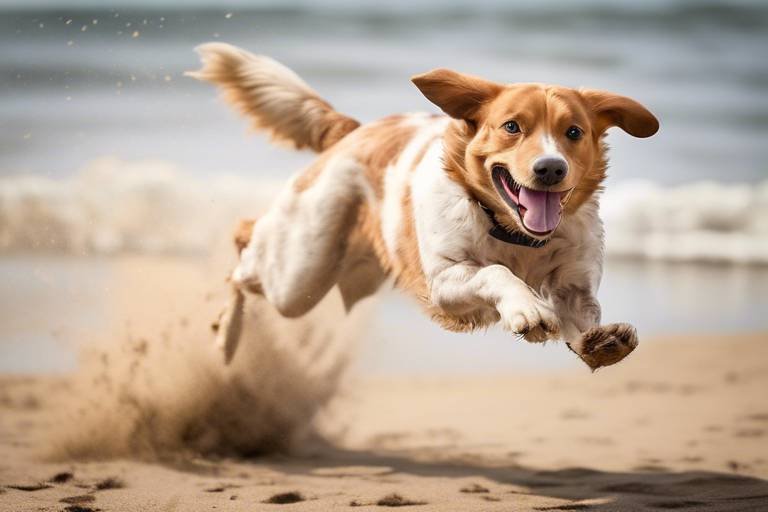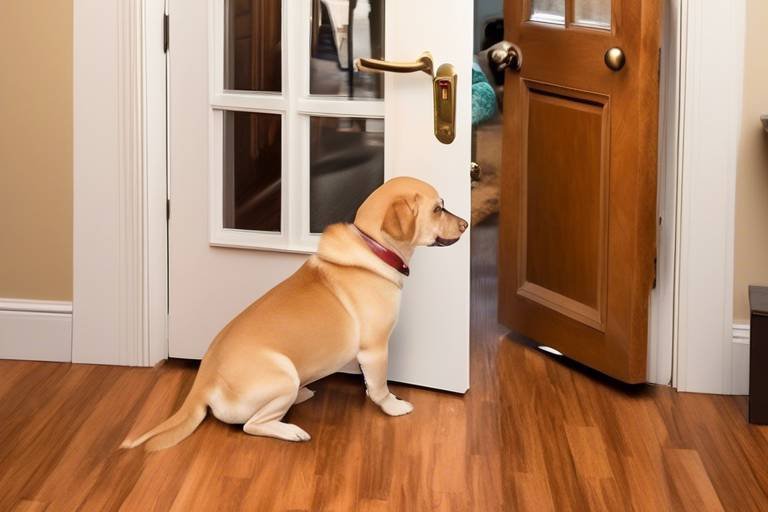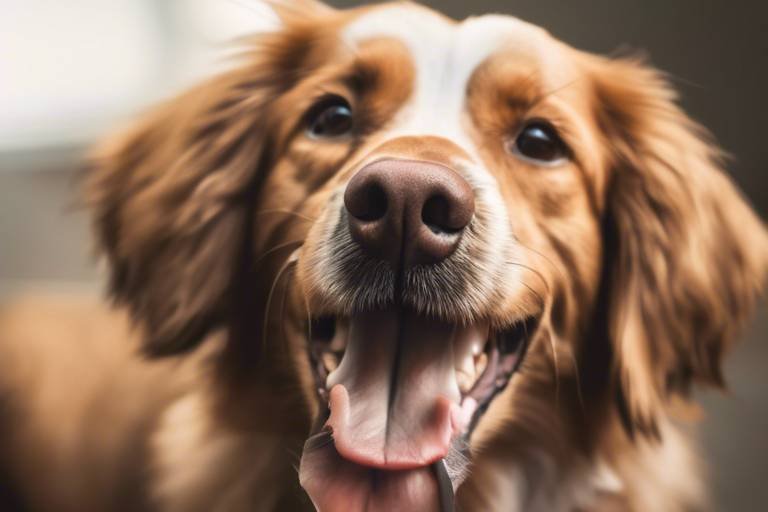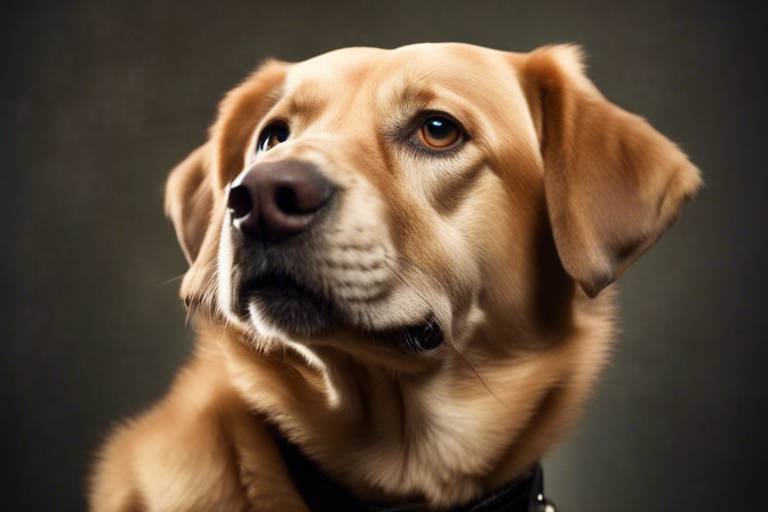How to Teach Your Dog to Navigate Obstacles
Teaching your dog to navigate obstacles is not just about improving their agility; it's about creating a deeper bond between you and your furry friend. Imagine your dog bounding over jumps, weaving through poles, and confidently dashing through tunnels—it's a sight that can fill any dog owner's heart with pride! This comprehensive guide will walk you through the essential steps to train your dog effectively, ensuring both you and your pet enjoy the process.
Before diving into the specifics of training, it’s crucial to understand that every dog is unique. Their instincts, personalities, and physical abilities vary widely, which means that a one-size-fits-all approach simply won’t work. Instead, you’ll want to tailor your training methods to suit your dog’s individual needs. Recognizing your dog’s natural instincts is the first step in creating an engaging obstacle course that challenges them appropriately.
Once you have a good grasp of your dog’s instincts, the next step is to choose the right obstacles. Think about your dog’s size, skill level, and preferences. For instance, a small dog might struggle with high jumps but excel at weaving through poles. On the other hand, a larger dog may need more space to navigate certain obstacles. The goal is to create a safe and enjoyable environment where your dog can thrive.
Every dog has instincts that drive their behavior. For example, some dogs are natural jumpers, while others may be more cautious and prefer to take their time. Understanding these instincts can help you design obstacle courses that not only engage your dog but also respect their comfort levels. By observing your dog during playtime, you can identify what excites them and what they might shy away from. This insight will be invaluable when introducing new obstacles.
When it comes to selecting obstacles, variety is key. You want to keep your dog interested and motivated, so consider incorporating different types of challenges. Here are a few popular options:
- Jumping Obstacles: These can be simple hurdles or more complex jumps, depending on your dog's skill level.
- Tunnels: Dogs often find tunnels exciting and they provide a great way to build confidence.
- Weave Poles: These require focus and precision, making them an excellent way to enhance agility.
As you introduce each obstacle, ensure that they are safe and appropriate for your dog’s abilities. Start with lower jumps and gradually increase the height as your dog gains confidence. Remember, patience is essential. If your dog seems hesitant, take a step back and allow them to acclimate to the new challenge.
Let’s delve a bit deeper into the types of obstacles you can incorporate into your training:
Jumping obstacles are a staple in agility training. When setting up jumps, make sure they are adjustable so you can modify the height as your dog progresses. Start with a height they can easily clear, and use positive reinforcement to encourage them to leap over the jump. Always monitor your dog’s technique to avoid any injuries.
Tunnels can be incredibly fun for dogs. Start by encouraging your dog to enter the tunnel using treats or toys. Once they are comfortable, gradually increase the length of the tunnel. Weave poles require more focus and coordination. Use treats to guide your dog through the poles initially, and then gradually phase out the treats as they become more confident.
Safety should always be at the forefront of your training sessions. To prevent injuries, ensure that all obstacles are stable and secure. Always warm up your dog before beginning the training and provide plenty of breaks to avoid overexertion. If your dog shows signs of discomfort or fatigue, it’s important to stop and reassess their training load.
Having a structured training plan is crucial for success. This plan should outline your goals, the types of obstacles you’ll use, and a timeline for progression. Setting achievable goals will keep both you and your dog motivated. For example, you might start with simple jumps and aim to have your dog confidently navigating them within a week.
When setting goals, break down the training into manageable steps. Instead of aiming for your dog to complete an entire obstacle course right away, focus on mastering one obstacle at a time. This approach not only makes training less overwhelming for your dog but also allows you to celebrate small victories along the way.
Monitoring your dog's progress is vital. Consider keeping a training journal or using an app to record achievements. Note down what works well and what doesn’t, so you can adjust your methods as needed. Tracking progress will also help you identify areas where your dog may need additional support or encouragement.
Q: How long should training sessions be?
A: Training sessions should be short and engaging, ideally lasting between 10 to 15 minutes. This helps maintain your dog's focus and enthusiasm.
Q: What if my dog is afraid of certain obstacles?
A: Take it slow! Introduce the obstacle gradually, using treats and positive reinforcement to build their confidence.
Q: Can older dogs learn to navigate obstacles?
A: Absolutely! Older dogs can benefit from obstacle training, but be mindful of their physical limitations and adjust the challenges accordingly.
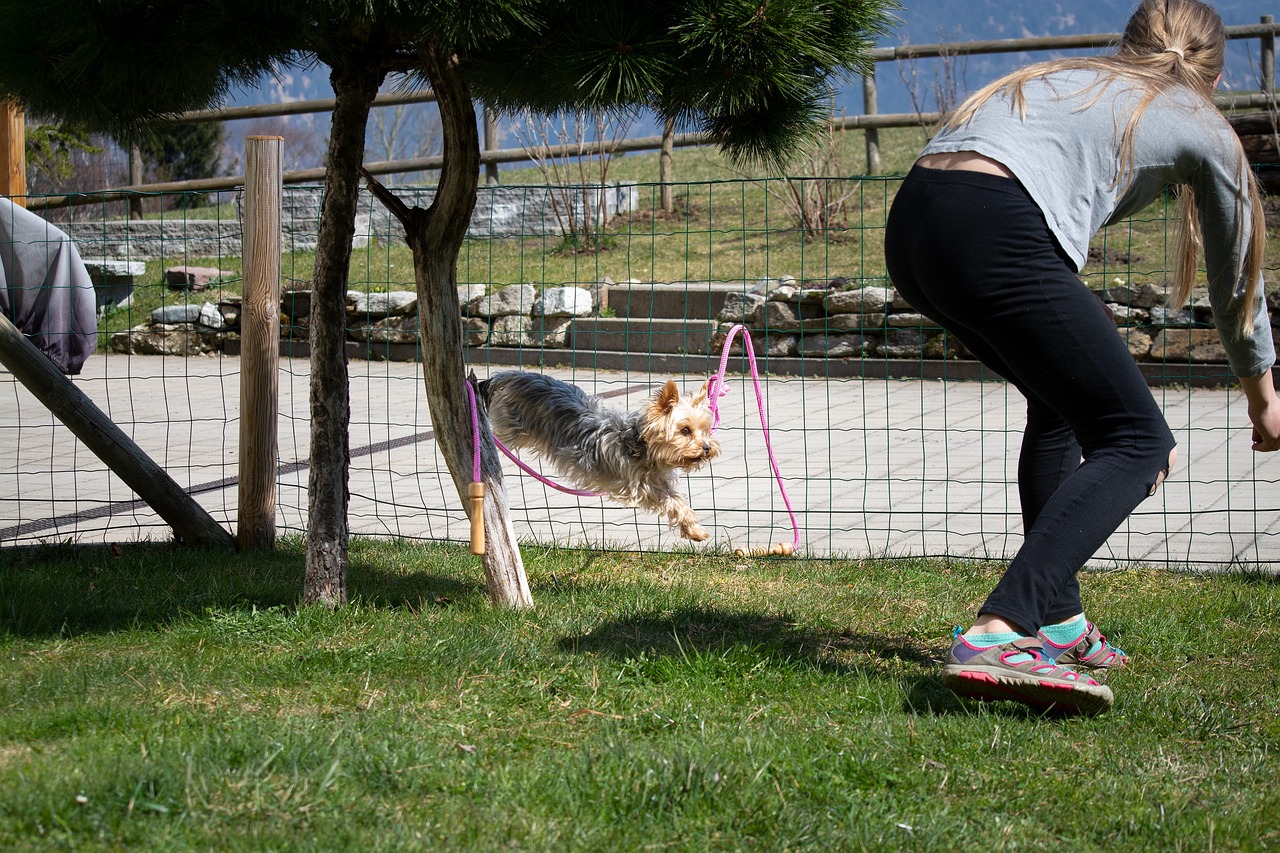
Understanding Your Dog's Instincts
When it comes to training your furry friend, understanding their instincts is like having a cheat sheet for success. Dogs are naturally curious creatures, and their instincts drive them to explore, play, and engage with their environment. This intrinsic motivation can be harnessed to make obstacle navigation not just a training task, but a fun adventure for both you and your dog. Think of it as tapping into their natural desire to hunt, chase, and problem-solve.
Each dog has a unique personality and instinctual traits that shape their behavior. For instance, some breeds are more inclined to chase after moving objects, while others might be more cautious and observant. By recognizing these traits, you can tailor your obstacle courses to align with what your dog finds engaging. This not only keeps them interested but also enhances their learning experience. For example, a high-energy breed like a Border Collie might thrive on high-speed jumps and tunnels, while a more laid-back breed may prefer gentle slopes and weave poles.
To better understand your dog's instincts, consider the following key points:
- Curiosity: Dogs are naturally curious and love to explore their surroundings. This can be leveraged during training by introducing new obstacles gradually.
- Playfulness: Incorporating games into training can make it more enjoyable. Use toys or treats to motivate your dog to navigate obstacles.
- Social Interaction: Many dogs are motivated by social interaction. Training sessions can be a great way to bond with your pet and reinforce their learning.
Moreover, understanding your dog's body language is crucial. Are they excited, hesitant, or confused? Dogs communicate a lot through their posture and facial expressions. For example, a wagging tail usually indicates enthusiasm, while a lowered head might signify uncertainty. By observing these cues, you can adjust your training techniques to better suit your dog's emotional state.
In summary, recognizing your dog's instincts is a fundamental step in creating an engaging and effective training environment. By aligning your training methods with their natural behaviors, you not only enhance their agility and obedience but also strengthen the bond you share. So, next time you set up an obstacle course, remember to consider your dog's instincts. It’s not just about teaching them to navigate; it’s about creating a joyful experience that taps into their natural abilities.
Q: How do I know what obstacles are best for my dog?
A: Observe your dog's behavior and preferences. Start with simple obstacles and gradually increase complexity based on their comfort level and skill.
Q: Can all dogs learn to navigate obstacles?
A: Yes! Most dogs can learn with the right motivation and patience. Tailor the training to suit their individual needs and instincts.
Q: How can I keep my dog motivated during training?
A: Use positive reinforcement, such as treats or praise, and incorporate play to keep training sessions fun and engaging.
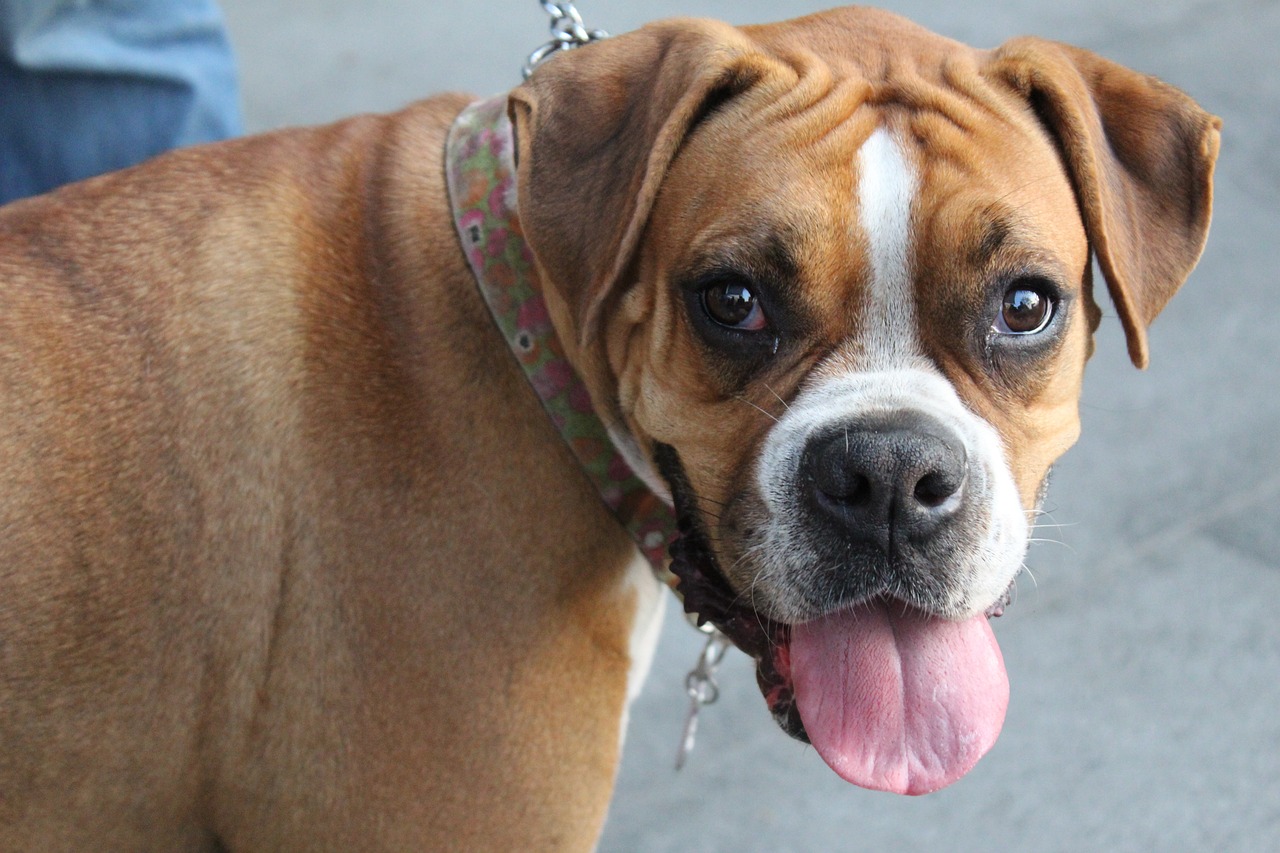
Choosing the Right Obstacles
When it comes to training your dog to navigate obstacles, is absolutely essential. Not only do they need to be suitable for your dog's size and skill level, but they should also cater to their interests and instincts. Imagine setting up a mini obstacle course that feels like an adventure park for your furry friend! You want to create an environment that challenges them while also being safe and enjoyable. So, how do you go about selecting the perfect obstacles?
First, consider your dog's size. A Great Dane is going to have a different experience with a jump than a Chihuahua. It's crucial to ensure that the obstacles are proportionate to your dog's dimensions. For example, small jumps might be perfect for smaller breeds, while larger jumps will be needed for bigger dogs. This not only keeps your dog safe but also boosts their confidence as they successfully navigate through the course.
Next, think about your dog’s skill level. If your dog is a novice, introducing complex obstacles right off the bat can be overwhelming. Start with simple hurdles and gradually increase the difficulty as they gain confidence and skill. This approach not only helps in building their agility but also strengthens the bond you share, as they learn to trust your guidance. You can create a progression plan that outlines how and when to introduce new challenges.
Another factor to consider is your dog's preferences and instincts. Some dogs naturally excel at jumping, while others may prefer crawling through tunnels or weaving between poles. Pay attention to what excites your dog during playtime. If they love to chase after balls, incorporating hurdles that require them to leap over while fetching can make training fun and engaging. You can even create a small survey chart to track their preferences:
| Obstacle Type | Dog's Reaction |
|---|---|
| Jumps | Excited |
| Tunnels | Cautious |
| Weave Poles | Curious |
Finally, always prioritize safety. Ensure that the materials used for the obstacles are sturdy and well-constructed. For instance, if you’re building jumps, use materials that can withstand your dog's weight and energy. Soft surfaces like grass or rubber mats can help cushion falls, reducing the risk of injury. Remember, a safe training environment not only protects your dog but also gives you peace of mind.
In summary, choosing the right obstacles involves a blend of understanding your dog's size, skill level, preferences, and ensuring their safety. By carefully selecting obstacles that cater to these factors, you’ll set the stage for a fun and rewarding training experience that both you and your dog will enjoy!
Types of Obstacles
When it comes to training your dog to navigate obstacles, the variety of obstacles you choose can significantly impact their agility, focus, and overall enjoyment. Each type of obstacle presents unique challenges and can be tailored to fit your dog's individual skill level and preferences. To keep things interesting and engaging, consider incorporating different types of obstacles into your training sessions. Here are some popular options:
- Jumping Obstacles: These are perhaps the most recognizable in agility training. Jumping obstacles can range from simple bars to more complex hurdles. The thrill of jumping can be exhilarating for dogs, and it helps in building their confidence as they learn to clear heights.
- Tunnels: Tunnels are fantastic for encouraging your dog to think independently. They can be straight or curved, and the excitement of racing through a tunnel can be incredibly stimulating. Tunnels also help improve your dog’s spatial awareness and speed.
- Weave Poles: Weave poles challenge your dog’s ability to maneuver and control their body. This obstacle requires focus and precision, making it a great way to enhance your dog's coordination and agility.
Each of these obstacles serves a purpose and can be used to develop different skills in your dog. For instance, jumping obstacles help with strength and confidence, while tunnels and weave poles improve agility and mental sharpness. As you introduce these obstacles, it’s essential to observe your dog’s reactions and adjust the difficulty level accordingly. Start with lower jumps and wider tunnels to build their confidence before progressing to more challenging setups.
To give you a better idea of how these obstacles can be structured, here’s a simple table that outlines the key characteristics and benefits of each type:
| Obstacle Type | Characteristics | Benefits |
|---|---|---|
| Jumping Obstacles | Bars or hurdles at various heights | Builds strength and confidence |
| Tunnels | Flexible, can be straight or curved | Encourages independent thinking and speed |
| Weave Poles | Vertical poles spaced evenly apart | Improves coordination and agility |
As you progress, remember to keep the training sessions fun and rewarding. Use plenty of praise and treats to encourage your dog as they navigate each obstacle. The ultimate goal is to create a positive experience that strengthens the bond between you and your furry friend while honing their skills. So, get out there, set up your obstacle course, and watch your dog shine!
Q: How do I know which obstacles are suitable for my dog?
A: Consider your dog's size, age, and fitness level. Start with basic obstacles and gradually increase complexity as your dog becomes more confident and skilled.
Q: How often should I train my dog on obstacles?
A: Consistency is key! Aim for short, frequent sessions a few times a week to keep your dog engaged without overwhelming them.
Q: What if my dog is afraid of an obstacle?
A: Take it slow! Use positive reinforcement to encourage your dog to approach the obstacle at their own pace. Patience is crucial.
Q: Can all dogs participate in obstacle training?
A: Most dogs can participate, but it's essential to consider their physical condition and temperament. Consult with a vet if you're unsure.
Jumping Obstacles
Jumping obstacles are not just a thrilling activity for your dog; they are also a fantastic way to enhance their agility and coordination. Imagine your furry friend soaring over a hurdle, tail wagging in pure joy! But before you get started, it’s essential to set up a safe and effective jumping course that caters to your dog's unique abilities. This will not only keep them safe but also make the experience enjoyable for both of you.
When designing jumping obstacles, consider the following factors:
- Height: Start with lower jumps to build your dog's confidence. Gradually increase the height as they become more comfortable.
- Materials: Use lightweight materials like PVC pipes for jumps. This ensures that if your dog accidentally knocks them over, they won't get hurt.
- Spacing: Ensure there is enough space between jumps to allow your dog to land safely and prepare for the next jump.
Here’s a simple way to set up your jumping obstacles:
| Obstacle Type | Recommended Height | Notes |
|---|---|---|
| Small Jump | 6-12 inches | Perfect for beginners or small breeds. |
| Medium Jump | 12-24 inches | Ideal for dogs with some jumping experience. |
| High Jump | 24-36 inches | For advanced dogs; ensure they are fully trained before attempting. |
To teach your dog to jump, start by using treats or toys to encourage them to leap over the obstacle. Always reward them with praise or a treat when they successfully complete a jump. This positive reinforcement will create a fun and engaging atmosphere, making your dog eager to learn. Remember, patience is key! If your dog hesitates or seems unsure, take a step back and practice at a lower height until they feel more confident.
As you progress, you can incorporate different jump patterns and even combine jumps with other obstacles like tunnels. This not only keeps the training fresh but also challenges your dog mentally and physically. Always keep an eye on their body language; if they seem tired or frustrated, give them a break. After all, the joy of jumping should never turn into stress!
1. How do I know if my dog is ready for jumping obstacles?
Look for signs of enthusiasm and energy when approaching the jumps. If your dog shows excitement and willingness to engage, they are likely ready to start training. Always consult with your veterinarian if you have concerns about your dog’s physical readiness.
2. What if my dog refuses to jump?
It's important to remain patient. Try lowering the height of the jump or using more enticing rewards. Gradually build their confidence before increasing the difficulty.
3. Can jumping be harmful to my dog?
Jumping can be safe when done correctly. Always ensure that jumps are appropriate for your dog's size and skill level, and monitor them for any signs of discomfort or fatigue.
4. How often should I train my dog on jumping obstacles?
Training sessions should be kept short and enjoyable, ideally around 10-15 minutes a few times a week. This prevents burnout and keeps your dog excited for the next session!
Tunnels and Weave Poles
When it comes to adding a dash of excitement to your dog's training routine, are absolute game-changers! Not only do they enhance your dog's agility, but they also provide a fun challenge that can keep both of you engaged. Imagine your furry friend zipping through a tunnel like a pro or weaving between poles with the grace of a dancer! These elements not only improve physical skills but also foster a deeper bond between you and your pet as you work together to master the course.
Starting with tunnels, it's essential to introduce them gradually to ensure your dog feels comfortable and confident. Begin by laying the tunnel flat on the ground, allowing your dog to explore it at their own pace. You might want to use treats or toys to encourage them to enter the tunnel. Once they’re comfortable, you can gradually elevate the challenge by lifting one end of the tunnel. This slight incline can add an element of surprise and excitement without overwhelming your pup.
Next up are the weave poles! These poles are fantastic for improving your dog's coordination and focus. Start with just a few poles set apart to make it easier for your dog to navigate. As they become more adept, you can increase the number of poles and tighten the spacing. The key here is to be patient and encouraging; every dog learns at their own pace. Use treats and positive reinforcement to celebrate their successes, no matter how small!
To help you visualize the setup, here’s a simple table outlining the basic steps for introducing tunnels and weave poles:
| Obstacle Type | Introduction Steps | Tips for Success |
|---|---|---|
| Tunnels |
|
Be patient and let them set the pace. |
| Weave Poles |
|
Celebrate small victories to boost confidence. |
Remember, the goal is to make training enjoyable and rewarding for your dog. The more fun your pup has navigating tunnels and weaving through poles, the more eager they will be to participate in future training sessions. So, grab those treats, set up your course, and watch your dog shine as they tackle these exciting challenges!
Q: How do I know if my dog is ready for tunnels and weave poles?
A: Look for signs of confidence and curiosity in your dog. If they enjoy exploring new things and are comfortable with basic commands, they are likely ready to try these obstacles.
Q: What if my dog is afraid of the tunnel?
A: Start by allowing them to explore it without pressure. Use treats and toys to entice them, and never force them through the tunnel. Patience is key!
Q: Can all dogs participate in obstacle training?
A: Most dogs can enjoy obstacle training, but it's important to consider their age, health, and physical abilities. Always consult with your veterinarian if you're unsure.
Q: How often should I practice with my dog?
A: Consistency is important, but keep sessions short and fun—around 10 to 15 minutes a few times a week is usually effective. This keeps your dog engaged without overwhelming them.
Safety Considerations
When it comes to training your dog to navigate obstacles, safety should always be your top priority. Just like you wouldn’t want to dive into a pool without checking the water first, you should ensure your training environment is safe and secure for your furry friend. Start by inspecting the area where you’ll be setting up your obstacle course. Look for any potential hazards such as sharp objects, uneven ground, or distractions that might cause your dog to lose focus or get injured.
Another crucial aspect is to choose appropriate obstacles. Not all dogs are created equal; their size, age, and physical condition can greatly influence what they can safely navigate. For instance, a small dog may struggle with high jumps, while a larger breed might find tunnels too cramped. Always tailor the obstacles to fit your dog's unique abilities. If you're unsure, consult with a professional trainer or veterinarian to determine what’s best for your pet.
While training, keep a close watch on your dog's body language. Signs of fatigue or discomfort can be subtle but are incredibly important to recognize. If your dog starts panting excessively, lagging behind, or showing signs of reluctance, it might be time to take a break. Just like us, dogs need time to rest and recover. You wouldn’t want to push them too hard, as this could lead to injuries or burnout.
Additionally, it’s wise to have a first-aid kit handy. You never know when a small cut or scrape might occur, and being prepared can make a world of difference. Include items like antiseptic wipes, bandages, and tweezers in your kit. It’s also beneficial to familiarize yourself with basic canine first aid. Understanding how to respond in emergencies can save your pet's life and give you peace of mind during training sessions.
Lastly, always remember to have fun during training! A positive and enjoyable atmosphere not only keeps your dog engaged but also strengthens your bond. When your dog feels safe, loved, and happy, they’re more likely to embrace challenges. So, keep the energy light and playful, and celebrate even the smallest victories along the way. After all, training should be a rewarding experience for both you and your dog!
- What should I do if my dog is afraid of the obstacles?
If your dog shows fear, take a step back and introduce the obstacles gradually. Use treats and positive reinforcement to encourage them to approach and explore the obstacles at their own pace. - How often should I train my dog on the obstacle course?
Consistency is key! Aim for short sessions of about 15-20 minutes, 3-4 times a week. This keeps your dog engaged without overwhelming them. - What if my dog gets injured during training?
Always stop the session immediately if you notice any signs of injury. Assess the situation and consult a veterinarian if necessary. Prevention is better than cure, so ensure the training environment is safe. - Can older dogs participate in obstacle training?
Yes! Older dogs can still enjoy obstacle training, but it's crucial to modify the course to suit their physical capabilities. Always consult with a vet for tailored advice.
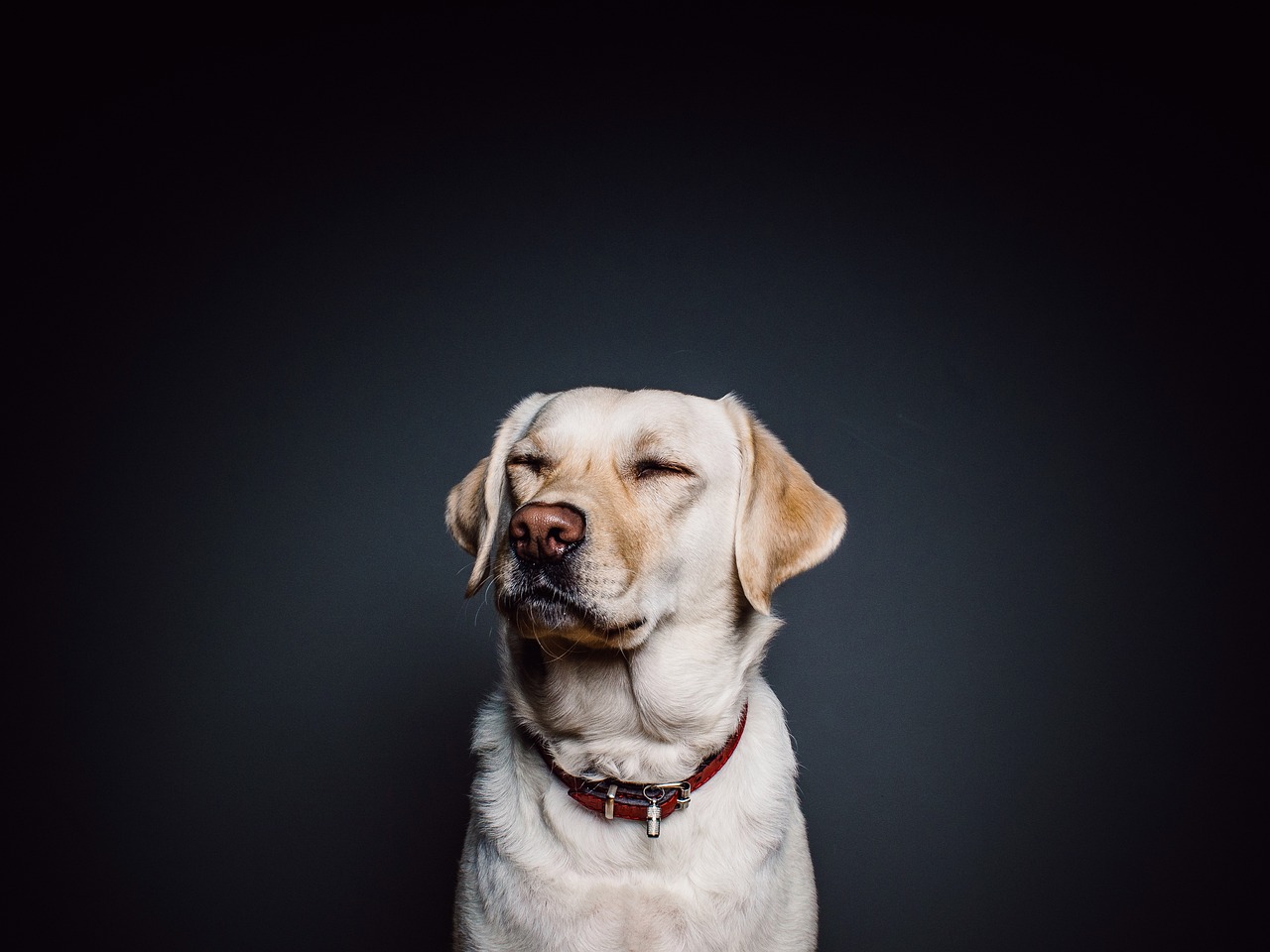
Creating a Training Plan
Creating a structured training plan is like drawing a roadmap for your dog’s agility journey. It’s not just about jumping through hoops or weaving between poles; it’s about fostering a relationship built on trust and communication. When you have a clear plan, you can guide your furry friend through each stage of their training, ensuring they not only learn the skills but also enjoy the process. Think of it as a dance; both you and your dog need to be in sync to master the steps.
First and foremost, you'll want to set achievable goals. These goals should be realistic and tailored to your dog’s current abilities. For instance, if your dog is new to agility training, you might start with small jumps and gradually increase the height as they gain confidence and skill. This gradual progression is crucial; it keeps your dog motivated and reduces the risk of injury. Remember, every dog is unique, and what works for one may not work for another. So, take the time to understand your pet's strengths and weaknesses.
As you outline your training plan, consider breaking it down into manageable steps. This approach not only helps keep your dog engaged but also allows you to celebrate small victories along the way. For example, you might dedicate the first week to introducing your dog to jumps, focusing solely on getting them comfortable with the concept before moving on to more complex obstacles. This method of incremental learning can significantly enhance your dog’s confidence and enthusiasm for the training sessions.
Tracking your dog's progress is another essential aspect of your training plan. Keeping a journal or using an app can help you monitor their development, making it easier to identify areas that need improvement. You might want to note things like:
- The types of obstacles your dog successfully navigated
- The duration of each training session
- Your dog’s behavior and energy levels during training
By documenting these details, you can adjust your training methods as needed, ensuring that your dog remains challenged but not overwhelmed. It’s all about finding that sweet spot where your dog feels accomplished yet eager for the next challenge.
Lastly, don’t forget to incorporate play and rewards into your training plan. Positive reinforcement is a powerful tool in dog training. Whether it’s a treat, a favorite toy, or a good old-fashioned belly rub, rewarding your dog for their efforts will encourage them to keep trying. Make training sessions fun and engaging, and your dog will look forward to them as much as you do.
In summary, a well-structured training plan is key to navigating the exciting world of obstacle training. By setting realistic goals, tracking progress, and keeping the experience enjoyable, you and your dog can embark on a rewarding journey together. So, grab those treats and get ready to watch your pup shine!
Here are some common questions that dog owners might have about creating a training plan:
- How often should I train my dog? - Aim for short, frequent sessions of about 15-30 minutes several times a week. Consistency is key!
- What if my dog seems uninterested in training? - Try mixing up the activities or using higher-value rewards to spark their interest. Sometimes a change of scenery can also help!
- Can I train my dog at home? - Absolutely! Many dogs thrive in a familiar environment. Just ensure you have enough space to set up your obstacles safely.
Setting Realistic Goals
When it comes to training your dog to navigate obstacles, is absolutely crucial. It's like having a roadmap for your journey; without it, you might find yourself lost or frustrated. Imagine trying to climb a mountain without knowing the route—it's daunting, right? The same goes for training your furry friend. You want to make sure that both you and your dog are on the same page, moving towards achievable milestones that will keep you motivated and engaged.
Start by assessing your dog's current skill level. Is your pup a seasoned pro at navigating the backyard, or are they just starting to explore the world of agility? Understanding where you both stand is the first step in crafting a training plan that makes sense. For example, if your dog is new to obstacle courses, setting a goal of completing a complex series of jumps and tunnels in one week may be setting the bar too high. Instead, aim for smaller, incremental goals, like successfully completing a single jump or tunnel on the first try.
To keep things exciting and to monitor progress, consider breaking down your training into specific, measurable objectives. Here are a few examples of what those goals might look like:
- Week 1: Introduce your dog to a single jump and encourage them to leap over it.
- Week 2: Add a tunnel and practice encouraging your dog to run through it.
- Week 3: Combine the jump and tunnel into a mini-course.
- Week 4: Introduce weave poles and practice navigating them.
By setting these smaller goals, you create a sense of achievement for both you and your dog. Each time your pup successfully navigates an obstacle, it’s a reason to celebrate! Plus, it helps build their confidence, which is key in any training process. Remember, training should be fun and rewarding, not stressful.
Additionally, keep track of your dog's progress. You can maintain a simple journal or use a training app to log each session's successes and challenges. This not only helps you stay organized but also gives you a visual representation of your dog's growth. It’s like looking back at old photos; you can see how far you’ve come together!
In the end, the goal is to foster a strong bond with your dog while enhancing their skills. By setting realistic goals, you not only pave the way for effective training but also ensure that your journey together is filled with joy and accomplishment. So, grab those treats, put on your training shoes, and get ready to have some fun!
Q: How long should each training session last?
A: Aim for 15 to 30 minutes per session. This keeps your dog engaged without overwhelming them.
Q: What if my dog isn't interested in the obstacles?
A: Use positive reinforcement! Treats and praise can help motivate your dog to engage with the obstacles.
Q: Can I train my dog alone, or should I have a partner?
A: You can train alone, but having a partner can help with timing and encouragement, making it more fun for both of you!
Tracking Progress
Tracking your dog's progress throughout the obstacle navigation training is essential for several reasons. First and foremost, it helps you identify what works and what doesn't, allowing you to fine-tune your training methods. Imagine trying to navigate a maze without knowing where the exits are; that’s what training without tracking feels like! By keeping a close eye on your dog's development, you can celebrate their achievements and motivate them to tackle new challenges.
To effectively track progress, consider maintaining a training journal or using a mobile app designed for pet training. This can be a fun and interactive way to record milestones and challenges. For instance, you might note how many jumps your dog successfully completed in a session, their reaction to new obstacles, or any areas where they struggled. This data not only serves as a record of your dog's journey but also provides insights into their behavior and preferences.
Here’s a simple table to illustrate how you might structure your tracking process:
| Date | Obstacle Type | Success Rate | Notes |
|---|---|---|---|
| 2023-10-01 | Jumping | 80% | Excited but hesitant on the last jump. |
| 2023-10-03 | Tunnel | 90% | Ran through without hesitation! |
| 2023-10-05 | Weave Poles | 70% | Needs more practice on the right side. |
In addition to logging successes, it’s equally important to note any setbacks. If your dog seems to struggle with a particular obstacle, jot down your observations. This could include factors like their energy levels, distractions in the environment, or even their mood. By analyzing these notes, you can adjust your training sessions to better suit your dog's needs. Perhaps they need more breaks, or maybe you need to simplify the obstacle for a while.
Furthermore, don't hesitate to share your progress with friends or fellow dog owners. Social interaction can provide new ideas and encouragement. You might even find a training buddy to join you on this journey, which can make the process more enjoyable for both you and your furry friend. Remember, training should be a fun and rewarding experience, not just for your dog but for you as well!
In summary, tracking progress is a crucial component of teaching your dog to navigate obstacles. It allows you to celebrate successes, identify areas for improvement, and adjust your training methods accordingly. So grab that journal or app, and start documenting your dog's incredible journey!
- How long should each training session be? Aim for short sessions of about 10-15 minutes to keep your dog engaged and prevent fatigue.
- What should I do if my dog is afraid of an obstacle? Take it slow! Use positive reinforcement and encourage them with treats or toys to build their confidence.
- Can I train my dog alone? Yes, but having a partner can help, especially for safety and motivation.
- How often should I train with my dog? Consistency is key! Aim for at least a few sessions each week for optimal results.
Frequently Asked Questions
- What are the benefits of teaching my dog to navigate obstacles?
Teaching your dog to navigate obstacles can significantly enhance their agility and obedience. It’s not just about physical exercise; it also strengthens the bond between you and your furry friend. Plus, it keeps their mind engaged and can help reduce behavioral issues caused by boredom.
- How do I start training my dog for obstacle navigation?
Start by understanding your dog's instincts and natural behaviors. Begin with simple obstacles that match their skill level. Gradually introduce more complex challenges as they gain confidence and skill. Always keep the training sessions fun and rewarding!
- What types of obstacles should I use?
Common types of obstacles include jumps, tunnels, and weave poles. Choose obstacles that suit your dog's size and agility level. For beginners, low jumps and wide tunnels are great options. As your dog progresses, you can introduce more challenging obstacles.
- Are there safety precautions I should take during training?
Absolutely! Safety should always come first. Ensure the training area is free of hazards and that obstacles are stable. Monitor your dog for signs of fatigue or discomfort, and never push them beyond their limits. Gradual exposure to obstacles will help prevent injuries.
- How can I track my dog's progress?
Keeping a training journal or using an app can be incredibly helpful. Record your dog's achievements, note any challenges they face, and celebrate their successes. This way, you can adjust your training methods as needed and keep the sessions engaging.
- What if my dog is scared of obstacles?
It's normal for some dogs to be hesitant about new obstacles. Use positive reinforcement to encourage them. Start with low-pressure introductions, and let them explore at their own pace. Patience and encouragement go a long way in building their confidence!
- How long should training sessions be?
Keep training sessions short and sweet! Aim for about 10 to 15 minutes, especially for younger or less experienced dogs. This helps maintain their focus and enthusiasm. You can always have multiple short sessions throughout the day rather than one long one.
- Can obstacle training be done indoors?
Definitely! You can set up a mini obstacle course in your living room or garage. Just make sure there's enough space for your dog to move safely. Indoor training can be a great way to keep your dog active, especially during bad weather.







